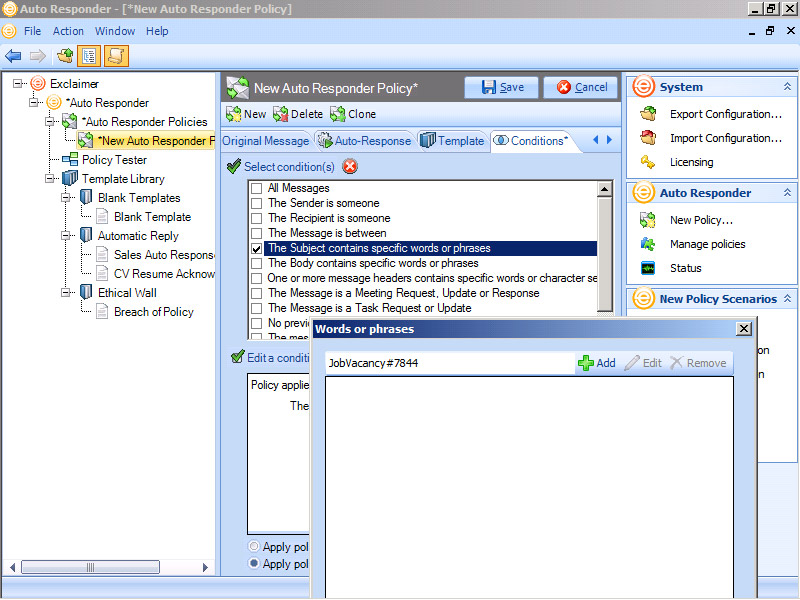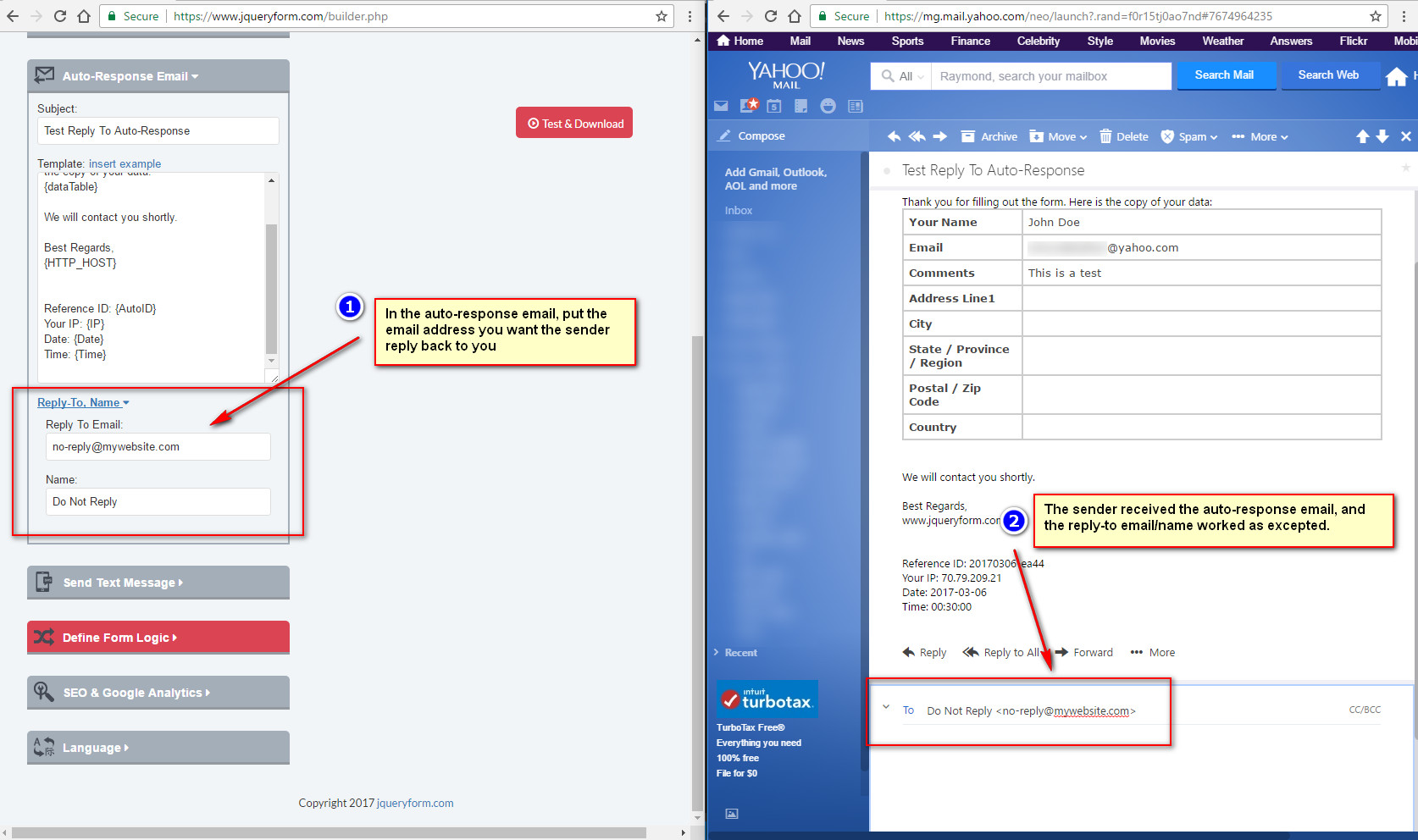

3 and 4 of the manuscript, the reference lines should really be reference ranges, indictae e.g. by at least adding the Antarctic EESC /ODGI curve, see also my atttached Fig. Thus, I think it is absolutely essential to discuss the substantial uncertainties associated with the ORI references values of 0% and 51.7% (or 48.3% ?). (2018), or the various WMO/UNEP Ozone Assessments. there is a considerable spread between various EESC time series, see e.g. Depending on the assumed age of air distribution, bromine contribution, data sources.
Response automailer on website series#
It should however be checked carefully and (if necessary) fixed throughout the paper.Ī second and larger problem, to me, is not mentioning the considerable uncertainty associated with using one EESC / ODGI time series only. Both values are close to 50%, though, and this difference / inconsistency is minor. This seems to be inconsistent with the EESC / ODGI plot in Fig. ORI2(T) would be 100% for recovery to 1980s ozone levele, and would be 0% in 1997. The other ozone recovery indicator ORI2(T), compares ozone recovery from 1997 to T with the expected maximum ozone depletion, from 1980 to 1997. Accordingly the total ozone difference between these two years (ORI1) should be 0.

According to the (mid-latitude) ODGI, EESC loadings in 19 should be the same. For EESC, the author uses the Ozone Depleting Gas Index of Montzka et al. The ORI values are then compared to what might be expected for chemical ozone depletion on the basis of Equivalent Effective Stratospheric Chlorine (EESC) loading for specific years (1980, 1988, 1997, 2020). Exceptions are ground-based data at Uccle and Arosa, and a larger than usual effect of the MLR variability removal at the Bismark station.

All four data sets, and the different smoothing and variability removal techniques give very similar ORIs. In each case, uncertainty for the ORIs is estimated using boot-strapped residuals.Īll together, this provides a pretty comprehensive picture of the ORIs at the stations and their uncertainties. In addition to using four data sets, the author also uses two different smoothing methods, as well "raw" time series and time series with variability removed by standard multiple linear regression (MLR). The author calculates ORI1 and ORI2 for 16 northern mid-latitude stations, on the basis of ground-based observations, space-based observations, and two assimilated data sets. ORI2 compares 2020, 1997, and 1980 total column ozone. Comparing average April to September total column ozone data from four years (1980, 1988, 1997, 2020), the author defines two ozone recovery indices ORI1 and ORI2.


 0 kommentar(er)
0 kommentar(er)
